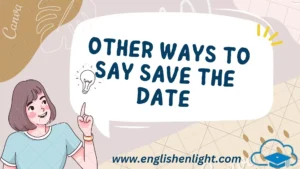Introduction
“‘Catchup’ isn’t a recognized term. When used as a verb, it should be ‘catch up.’ As a noun, it can be hyphenated as ‘catch-up’ (e.g., playing catch-up).”
In the realm of the English language, nuances can often be found in the simplest of terms. One such example is the phrase “catch up,” which can manifest itself in three distinct forms: “catch up,” “catch-up,” and “catchup.”
While seemingly interchangeable, each variation serves a specific purpose dictated by grammatical rules and contextual cues. This article delves into the depths of usage, providing clarity on when to employ each form and offering real-world examples to illustrate their application.
Overview
The exploration of “Catch Up or Catch-Up or Catchup?” reveals a fascinating journey through the intricacies of English language usage. In a landscape where nuances abound, these seemingly simple terms unveil a multifaceted tapestry of meaning. Through a detailed examination of each form and its corresponding examples, we uncover their distinct functions within various contexts.
“Catch up,” devoid of a hyphen, emerges as a dynamic verb phrase, embodying the process of bridging gaps and achieving parity after periods of lag or absence. Its versatility positions it as a fundamental tool for expressing progress and alignment in diverse scenarios.
In contrast, “catch-up,” with its hyphenated form, assumes a dual role as both a compound modifier and a noun. This variant facilitates communication in professional, social, and familial spheres, adding clarity and specificity to discourse surrounding updates and synchronicity.
Lastly, while “catchup” as a single word may find occasional colloquial use, its primary association with a tomato-based condiment underscores the importance of context in deciphering meaning.
Table of Forms
| Form | Example | Function |
| Catch Up | After missing several classes, Sarah needed to catch up on her studies. | Verb phrase indicating reaching a comparable level after falling behind. |
| Catch-Up | The office holds a weekly catch-up meeting to discuss ongoing projects. | Compound modifier or noun describing an event where updates are exchanged. |
| Catchup | The burger joint’s secret catchup sauce has a loyal following. | Less common, typically denotes a tomato-based condiment used as a sauce or dip. |
When to Use Each Form
Catch Up
First and foremost, “catch up” without a hyphen is utilized as a verb phrase. Its primary function is to describe the act of reaching a level or state comparable to others after falling behind. In this form, “catch” serves as the verb, while “up” functions as an adverb indicating direction or completion.
Example 1:
- After missing several classes due to illness, Sarah needed to catch up on her studies to prepare for the upcoming exam.
Example 2:
- The team worked tirelessly to catch up with their competitors in the final quarter of the game.
Catch-Up

Conversely, “catch-up” with a hyphen serves as a compound modifier or noun. As a modifier, it precedes a noun to describe something that pertains to catching up or bringing up to date. When used as a noun, it refers to an event or activity where individuals or entities gather to update each other on recent developments or progress.
Example 3 (Modifier):
- The catch-up meeting proved to be instrumental in aligning the team’s objectives for the upcoming project.
Example 4 (Noun):
- Every Friday, the office holds a catch-up to ensure everyone is on the same page regarding ongoing projects.
Catchup
Lastly, “catchup” written as one word is a less common variation often considered incorrect in standard English. However, it may appear colloquially or in specialized contexts. It typically refers to a type of sauce made from tomatoes, vinegar, sugar, and spices, commonly used as a condiment.
Example 5:
- The burger joint’s secret recipe for their catchup sauce has garnered a loyal following among patrons.
Real-World Examples

To further elucidate the distinctions between these forms, consider the following real-world scenarios:
Scenario 1: Professional Development Seminar
Usage: Catch-Up
- Context: Employees attend a catch-up seminar to familiarize themselves with recent industry advancements and best practices.
Scenario 2: Sports Competition
Usage: Catch Up
- Context: Despite trailing behind in the first half, the team manages to catch up with a series of strategic plays, ultimately securing victory.
Scenario 3: Academic Setting
Usage: Catch Up
- Context: Students who missed classes due to unforeseen circumstances must diligently work to catch up on missed lectures and assignments.
Scenario 4: Family Reunion
Usage: Catch-Up
- Context: Relatives from across the country gather for a weekend catch-up, sharing stories and updates on their lives since their last meeting.
Scenario 5: Culinary Endeavors
Usage: Catchup
- Context: The chef experiments with various ingredients to perfect his signature catchup sauce, enhancing the flavor profile of his dishes.
Saturdays or Saturday’s?
Key Takeaways: Catch Up vs. Catch-Up vs. Catchup
- Catch up without a hyphen is used as a verb phrase to signify reaching a level comparable to others after falling behind.
- Catch-up with a hyphen serves as a compound modifier or noun, describing something related to catching up or an event where updates are exchanged.
- Catchup as one word is less common and typically denotes a tomato-based condiment used as a sauce or dip.
Conclusion
In conclusion, the exploration of “catch up,” “catch-up,” and “catchup” illuminates the intricacies embedded within seemingly simple language constructs. Through dissecting their respective forms and contexts of usage, we unveil a nuanced landscape where each variation serves a distinct purpose.
“Catch up” stands as a dynamic verb phrase, depicting the act of bridging a gap to align with others after a period of lag or absence. Its versatility makes it a fundamental tool for expressing the pursuit of parity and progress in various spheres of life.
Meanwhile, “catch-up,” with its hyphenated form, assumes the role of both a compound modifier and a noun, facilitating communication in professional, social, and familial settings. Whether describing a meeting aimed at synchronizing efforts or an informal gathering to exchange updates, its usage adds clarity and specificity to discourse.
Lastly, while “catchup” as a single word may find occasional colloquial use, particularly in culinary contexts, its primary association with a tomato-based condiment underscores the importance of context in deciphering meaning.
By embracing the distinctions between these forms and leveraging them appropriately, individuals can navigate the nuances of the English language with confidence and precision.
Whether engaging in academic pursuits, professional endeavors, or everyday conversations, mastery of these nuances enhances clarity, effectiveness, and eloquence in communication.
In essence, the journey through “catch up,” “catch-up,” and “catchup” serves as a testament to the richness and complexity of language, inviting us to delve deeper into its depths and emerge enlightened, equipped, and empowered in our linguistic pursuits.

Hi, I’m Alexander, the admin of the website “English Enlight.” My job is to make sure everything runs smoothly on the site. I help users if they have any problems and make sure all the information is correct. It’s important to me that everyone enjoys using our website and learns something new about English every time they visit. If you need any help or have any questions, feel free to reach out to me!













